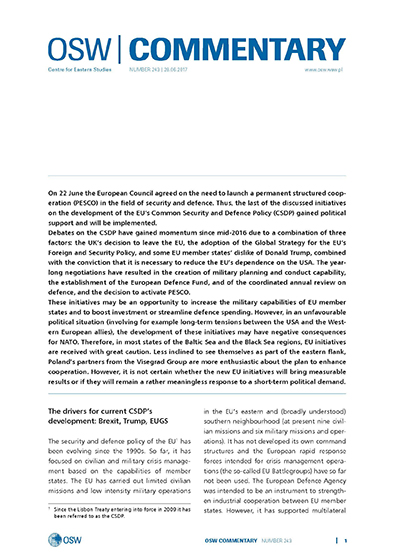Russia’s Greater Eurasia and China’s New Silk Road: adaptation instead of competition
Russia’s Greater Eurasia and China’s New Silk Road: adaptation instead of competition
Author(s): Marcin Kaczmarski, Witold Rodkiewicz
Subject(s): Economic policy, International relations/trade, Geopolitics
Published by: OSW Ośrodek Studiów Wschodnich im. Marka Karpia
Keywords: Russia; China; economy; international relations
Summary/Abstract: The argument that a crisis in Russian-Chinese relations is unavoidable has been repeatedly referred to by analysts since the 1990s. The reason for this crisis would be geopolitical competition between the two powers in Central Asia. In 2013, China’s President Xi Jinping announced the concept of the New Silk Road (referred to by the Chinese side as ‘One Belt, One Road’). At the same time, Moscow announced its efforts to build its own integration project in the form of the Eurasian Economic Union. These two developments seemed to confirm that the initial argument was correct and that the two projects were apparently fated to compete. Meanwhile, in May 2015, during President Xi Jinping’s visit to Moscow, a joint declaration was issued calling for combining the two projects and creating a formal mechanism for their coordination in the form of a joint task force. The vision of “a great Eurasian partnership” announced by President Vladimir Putin during the International Economic Forum in St. Petersburg on 16–17 June 2016 – which he also referred to as the Greater Eurasia project – is a signal that Moscow has ultimately opted for the strategy of joining a stronger partner (bandwagoning) instead of choosing the strategy of counterbalancing the rising power of China. At the same time, Moscow is trying to conceal the growing asymmetry in Russian-Chinese relations.
Series: OSW Commentary
- Page Count: 7
- Publication Year: 2016
- Language: English
- Content File-PDF

